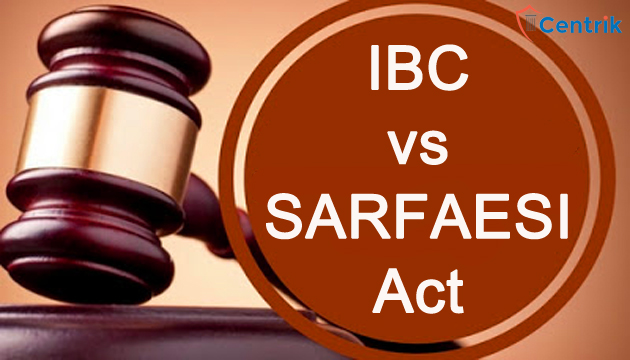
Status as on: 27/03/21
INTRODUCTION
The Insolvency and Bankruptcy Code, 2016 (hereinafter referred to as the “IBC”) was enacted to include a time-bound consolidation of laws relating to restructuring and insolvency. This single codified structure was created to bring together the previously disparate laws governing this subject matter, which were scattered throughout several statutes. The IBC has turned out to be the most effective and important legal framework for the companies which are under financial distress. The IBC majorly give these companies a ray of hope to survive this difficult times and get restructured/reorganized through the same. It further helps the creditors of the distressed company to realize their long recovering dues.
The Securitization and Reconstruction of Financial Assets and Enforcement of Securities Interest Act, 2002 on the other hand provides for the recovery of a non performing asset (NPA) to the banks and other financial institutions. The methods under the acts include either taking over the possession of the secured assets of the borrower (with the right to lease, assign or sell the secured asset) or taking over the management or business of the borrowers until NPA is recovered. The jurisdiction of all such matters with regards to the SARFAESI Act lies before the Debt Recovery Tribunal.
Although both the acts aim to provide relief toward the outstanding dues of the creditors, but the mechanism and working of both the Acts are different.
Difference between IBC and SARFAESI Act
The following are the key differences between both the statues:-
- The SARFAESI Act protects financial creditors, who are mostly banks and other financial institutions, by allowing them to impose their security interests without the need for court interference. The IBC, on the other hand, guarantees the interests of all forms of creditors, which are further divided into Financial and Operational Creditors by the IBC.
- As stated clearly in the code, the code takes precedence over SARFAESI during the Insolvency Resolution Process.
- Individuals and unincorporated companies are handled differently under the IBC, which distinguishes between corporate debtor liquidation (which falls under the jurisdiction of the NCLT) and individual and company liquidation (which falls under the jurisdiction of the DRT), while the same has not been done by the SARFAESI Act.
- An action under the SARFAESI Act will result in recovery through the selling of assets in cases where there is no revenue source, no opportunity for the company to be resurrected, and no substantial assets with the guarantors, while a resolution plan under the IBC is usually not feasible in such cases. Furthermore, expenses under SARFAESI Act on recovery is lesser than the cost of the resolution process under IBC.
- In large size cases where there is a high debt burden, SARFAESI Act is not much effective and taking physical possession in such instances kills the business and there is little scope of revival. On the other hand, resolution plans under IBC are focused towards securing the interest of all stakeholders and directed toward the revival of the business as well, hence in such large cases, IBC is highly effective.
Conclusion-
After the IBC was introduced in 2016, it has been observed that lenders prefer it to the SARFAESI Act. Even after the amendments to the SARFAESI Act, several problems remain unanswered, and the Act has struggled to demonstrate its efficacy in numbers. In the fiscal year 2018-19, the recovery rate under the SARFAESI Act was just 14.5 percent, while it was 42.4 percent under the IBC, which is considerably higher than the former. Furthermore, the SARFAESI Act continues to have an issue with pending proceedings. As of June 30, 2017, the Debt Recovery Tribunal (DRT) had 109,598 cases pending, totaling Rs 6,35,000 crore in recovery dues. As of November 2019, there had been 160 cases resolved under the IBC. Up until September 2019, 2,542 cases had been accepted. As a result, the IBC is favoured over the SARFAESI Act, primarily because it offers a quick solution and is also effective in reviving the company and safeguarding the interests of all stakeholders.
Disclaimer – The above article is based on the personal interpretation of the related orders and laws. The readers are expected to take expert opinion before relying upon the article. For more information, please contact us at rera@centrik.in




 join For Updates
join For Updates